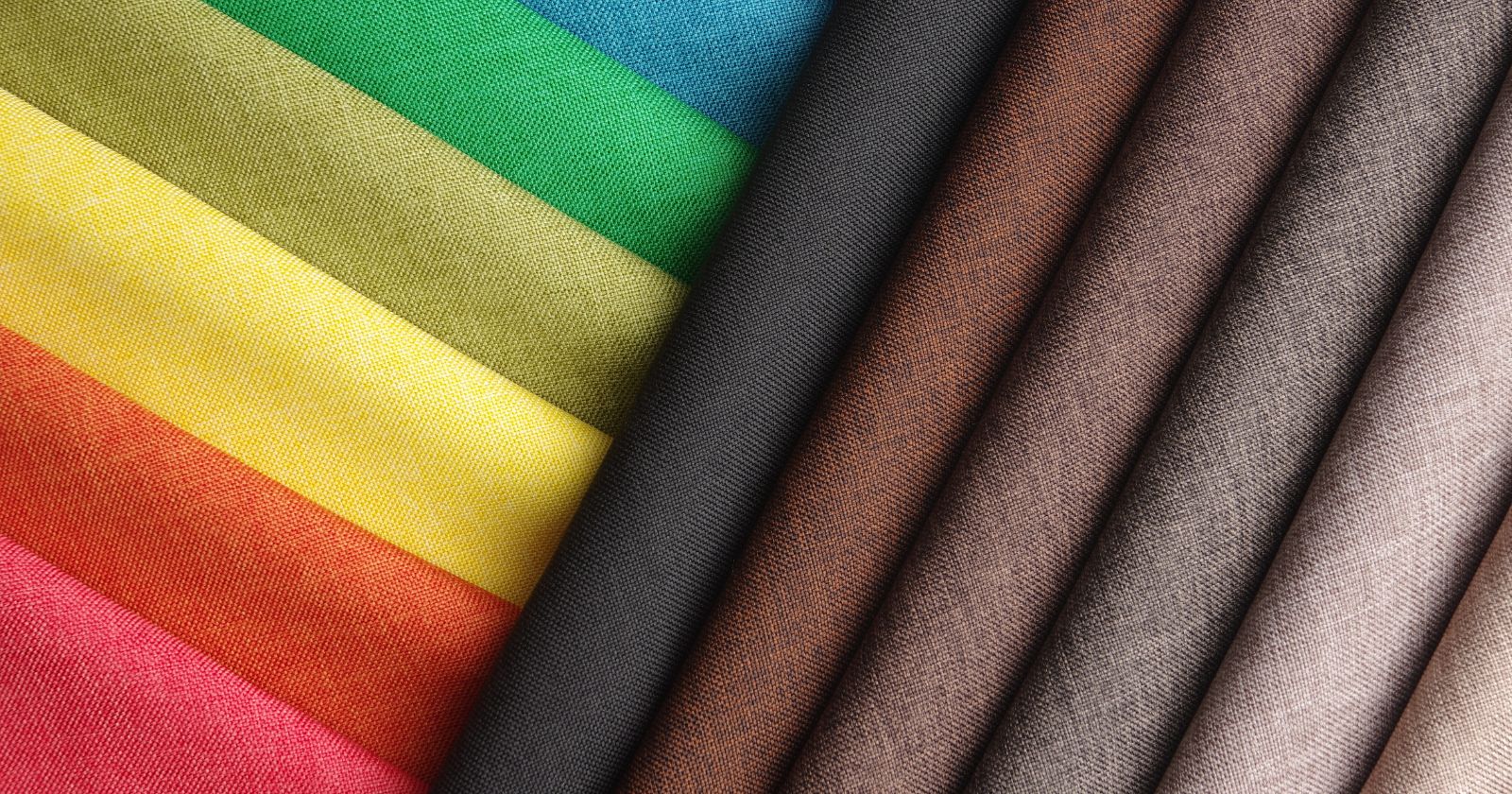Linen and Cotton fabrics are both made from natural fibers, and they’re both breathable, wick moisture well, and strong. But which is best for your clothes and sheets?
The main differences between linen and cotton are that linen is more durable and breathable, but has a rougher texture, while cotton is softer, stretchier, and retains heat better. Of the two, linen is more sustainable, although organic cotton is also a good choice.
Key Takeaways
Both linen and cotton are natural textiles
Linen is better at keeping you cool than cotton
Linen feels rougher than cotton, but softens over time
Linen is considerably more durable than cotton
Linen production is better for the environment than cotton (even organic cotton)
Below, we’ve compared linen and cotton on several different attributes, including comfort & feel, durability, care & maintenance, and production & sustainability.
We’ve then assessed how these factors may affect your purchasing decisions for bedding and clothes. Let’s get started:
Table of Contents
- Definitions and Uses
- Comfort and Feel
- Durability
- Care and Maintenance
- Production & Environmental Impact
- Linen vs Cotton for Sheets
- Linen vs Cotton for Clothes
Linen vs Cotton Definition and Uses
Before we examine the differences in detail, let’s start with the basics:
Linen is a natural textile derived from the fibers of the flax plant. Linen fabric is known for its durability, breathability, and unique texture.
It is commonly used for clothing, particularly summer and resort wear, due to its exceptional ability to keep the wearer cool and comfortable in warm climates. Linen fabrics are also used for bedsheets, tablecloths, towels, and upholstery.
Cotton, another natural textile, is made from the soft fibers surrounding the seeds of the cotton plant. This versatile and widely-used fabric is renowned for its softness, comfort, and adaptability to various climates.
Cotton fabric is a staple in the fashion industry and is used for everything from t-shirts and jeans to dresses and underwear.
Cotton is also popular choice for bedsheets, towels, and home textiles. Its appearance can vary depending on the quality and type of cotton used, but it generally has a smooth, even texture that’s comfortable against the skin.
Linen vs Cotton: Comfort and Feel
Whether you’re wearing a shirt or in bed, the comfort of the fabric touching your skin is important. Let’s check out how linen and cotton measure up their softness, weight, and other factors that affect how comfortable they are:
Softness, Weight, and Thermal Insulation
Cotton fabric is known for its softness, while linen fabric has a slightly rougher texture – not exactly uncomfortable, but you notice the difference, although it does soften with use. In terms of weight, cotton fabric is generally lighter and less dense than linen fabric. This difference can be noticeable, especially if you’re sleeping under a sheet.
When it comes to regulating temperature, linen beats cotton. Linen fibers are woven looser than some other fabrics, which contributes to its excellent breathability and heat conductivity, helping to keep you cool when its hot. Cotton also boasts good breathability but retains heat more than linen, making it a more suitable choice for cooler seasons.
Moisture Absorption, Breathability, and Drying Time
Both linen and cotton excel in moisture absorption: linen fibers can absorb about 20% of their weight in water, while cotton fibers can absorb about 25% of their weight in water. You might assume cotton is superior to linen in humid conditions, but absorption alone does not tell the full story.
Although is doesn’t absorb quite as much moisture, linen has superior breathability and moisture-wicking; because its loosely woven, linen allows more airflow. This means that it dries quicker, so your sheets and clothes are less likely to feel damp in humid conditions.
Verdict: For Comfort, Linen vs Cotton is Down to Personal Preference
Linen’s excellent breathability and moisture absorption, makes it more ideal for hot, humid conditions, while cotton is a little better at keeping you warm. But for most people, it will come down to the texture – the smoother feel of cotton textile perhaps giving it a slight edge over linen.
Linen vs Cotton: Durability
When it comes to comparing the durability of linen and cotton, we’ve examined several factors, including tensile strength, resistance to staining, and resistance to wrinkling. Let’s see how these attributes (and more) affect the durability of linen and cotton:
Tensile Strength, Abrasion Resistance, and Elasticity
Linen fabric is known for its impressive tensile strength, both dry and wet, making it a more robust fabric compared to cotton. This strength translates into excellent abrasion resistance, meaning linen can withstand wear and tear better over time. Cotton, while still a durable fabric, may not offer the same level of resilience as linen.
In terms of elasticity, cotton fiber takes the lead. With its natural stretchiness, cotton textiles will maintain their shape and recover from deformation better, which is particularly useful in clothing. Linen fabrics are much less elastic than cotton ones and may not bounce back as quickly from being stretched or deformed.
Pilling Resistance
Linen is also more resistant to pilling than cotton, because it has longer fibers and is more resistant to abrasion, although the difference is minor and can be mitigated by buying high-quality cotton. Egyptian cotton, for example, has particularly long fibers.
UV Resistance, Colorfastness, and Mold & Mildew Resistance
Neither linen nor cotton resist UV rays as well as synthetic materials. They won’t hold their colors as well as these materials either, although they do not perform badly at this, with linen having an edge over cotton. The length your color holds is more likely to come down to how your garment is manufactured and how well you care for it.
As natural fibers, both linen and cotton can absorb a lot of water, making them susceptible to mold and mildew. Here, linen’s antibacterial properties give it an edge, although as long as you’re storing your clothes correctly this should not be an issue.
Verdict: Linen Beats Cotton for Durability
Linen’s superior tensile strength and abrasion resistance give it a win here. Given proper care, linen clothes and sheets are likely to outlast cotton clothes or sheets, although cotton is no slouch, particularly if it’s high-quality.
Care and Maintenance of Linen and Cotton Clothes
Caring for your linen and cotton clothes and bedsheets is essential to ensure their longevity and preserve their appearance, but which is easier to care for? In this section, we’ll compare these fabrics on washing, drying, stain resistance, wrinkling, shrinking, and fading.
Remember: these fabrics are often blended with others, and this can affect their care instructions. Always check the label!
Washing and Drying
When it comes to washing, both linen and cotton require gentle care. Linen should be washed in cold or lukewarm water using a mild detergent, and it can be machine-washed on a gentle cycle (check the label first).
Cotton is also best washed in cold water and can usually be machine-washed, but it’s essential to follow the care instructions on the garment’s label. Keep in mind that linen and cotton may shrink when exposed to high temperatures, so always opt for cold water when washing both fabrics.
When drying linen, it’s best to air-dry it flat or hang it, as it can become stiff when machine-dried and not all lien is tumble dry safe. Cotton can often tumble-dried on low heat, but air-drying is the gentlest and most energy-efficient option. Avoid high heat for both.
Stain Resistance, Wrinkling, and Fading
Both linen and cotton are prone to wrinkling, although linen particularly so. However, their distinct textures can make these wrinkles appear differently – and linen comes off better (at least in, in our opinion!). Linen’s natural creases often lend a casual, relaxed look, whereas cotton wrinkles appear more dishevelled. Both fabrics also stain easily, although with prompt action you should be able to get most stains out of both.
When it comes to colorfastness, both linen and cotton can lose color over time, either through washing or direct sunlight, but proper washing and drying techniques will help to maintain their vibrant colors. Always follow the care instructions on your garment’s label and avoid using harsh chemicals or exposing the fabric to direct sunlight for extended periods, as this can cause fading.
Shrinkage
Both linen and cotton can shrink when exposed to high temperatures. To minimize shrinkage, always wash and dry your garments according to their care labels, and avoid using high heat. If you need to iron your linen or cotton items, use a low heat setting and iron them while they’re still slightly damp to avoid damaging the fibers.
Verdict: Cotton Is Slightly Easier to Care For Than Linen
This is a close one, but cotton edges it. Cotton is slightly less prone to wrinkling than linen and is more likely to be machine-washable.
Production & Environmental Impact of Linen and Cotton Production
We believe it’s important to choose fabrics not just on how they feel, but also how they affect our planet. Let’s see how these two natural fibers measure up:
Material Sourcing and Water Consumption
Linen is made from flax fibers, a hardy plant that can grow in less-than-ideal conditions are quires minimal water and pesticides during cultivation. In contrast, cotton plants require a lot of water, especially when grown in non-ideal conditions. Non-organic cotton relies heavily on irrigation, which can contribute to water scarcity and environmental stress.
Chemical Usage and Energy Consumption
Linen production generally uses very few chemicals, as flax requires little or no pesticide and herbicide application and no chemicals are required to create linen from flax.
The cotton industry is notorious for its heavy use of pesticides and insecticides, which can contaminate water sources and harm ecosystems. The only exception is organic cotton, which is produced using fewer chemicals.
When it comes to energy consumption, both linen’s requirements are again significantly lower. One kilogram of linen requires 10 MegaJoules to produce, while one kilogram of cotton requires 60 MegaJoules to produce. Cotton still uses less energy than many synthetic fabrics however.
Waste Generation and Greenhouse Gas Emissions
Both linen and cotton production generate some waste, including plant residues and byproducts from processing. Linen and cotton waste is sometimes repurposed, and both these natural fibers are biodegradable (see below)
Cotton production, due to its extensive use of fertilizers and pesticides, contributes to higher greenhouse gas emissions than linen production. Flax cultivation has a smaller carbon footprint, as it requires fewer inputs and generates fewer emissions.
Recyclability and Biodegradability
Both linen and cotton are recyclable and biodegradable, making them more environmentally friendly than synthetic fabrics. However, the recycling process for textiles can be complex and depends on the availability of facilities and technology. Biodegradability is an advantage for both fabrics, as they can break down naturally in the environment, reducing their long-term impact.
Sustainable Alternatives and Industry Initiatives
Organic cotton offers significant environmental benefits over standard cotton, as it relies on natural pest control methods and organic fertilizers, reducing the need for synthetic chemicals.
Verdict: Linen Is More Sustainable Than Cotton
In conclusion, linen generally has a smaller footprint due to its lower water consumption, chemical usage, and greenhouse gas emissions. Organic cotton is much better than normal cotton, but at an increased cost.
Linen vs Cotton Sheets – Which Should You Choose?
So, which fabric is the best choice for your bed sheets? Overall, linen is the superior fabric, especially in warmer weather. Linen sheets will keep you cool and should last for longer. Linen bedding is also more sustainable.
In cooler temperatures, cotton sheets will keep you warmer – and there’s also the fact that cotton bedding feels softer, which will be a deciding factor for many. If you do go for cotton sheets, make it organic cotton.
Should You Choose Linen or Cotton for Clothing?
Linen clothes are better than cotton clothes at keeping you cool, and they’ll also last longer and more sustainable. However, linen clothing will wrinkle more than cotton ones. Because it’s more sustainable, we favor linen, however organic cotton is also a good choice.


